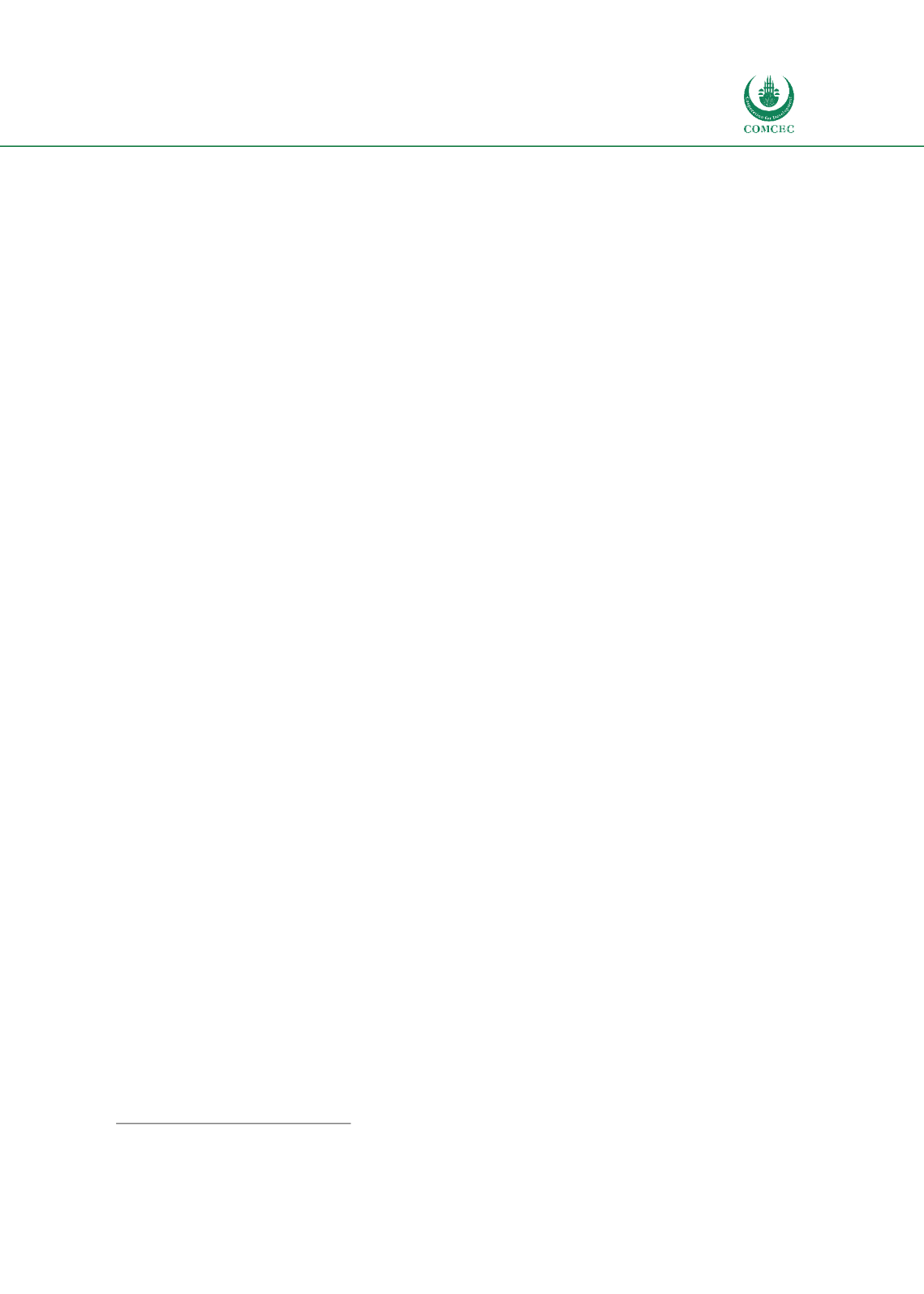

Facilitating Trade:
Improving Customs Risk Management Systems
In the OIC Member States
123
by moving the customs declaration from a weaker channel to one with more controls (e.g., green
to orange or orange to red). At this level, however, the opposite rechanneling is not allowed.
During the 1
st
quarter of 2017, 7947 customs declarations were subject to customs control (red,
orange, yellow and green channel), by the selectivity module of the TAME. Corresponding
customs controls resulted in the detection of fifty-six offenses (irregularities) were detected, or
0.7% of controlled declarations. During the 2
nd
quarter of 2017, 7633 declarations were subject
to control or 99.8% of the customs declarations with risk. Sixty customs declarations or 0.8% of
the controlled declarations resulted in the offense.
5.2.4.3
Covering/Treatment
TAME is covering 95% of the customs declarations submitted by traders. The total coverage of
all operations depends on the coverage of the customs territory by telecommunication
networks; two BCPs are not yet connected, and they do not use risk management.
The treatment is supposed to be done by observing the results issued by the system. The
changes made by the operational services should normally be justified by a report stating the
relevance of the reasons and readjust, if necessary, the calculation inputs. Unfortunately, this
procedure is not always observed by the customs officers.
However, TAME significantly reduced the red channels that were due to a lot of static targeting
related to origins and category of traders, without really applying an up-to-date analysis and
risk assessment
5.2.4.4
Evaluation of results/feedback
The evaluation/feedback from the control is still a weak point due to the incomplete information
provided by customs officers. The main issue is the
modus operandi
- description of
irregularities, pictures/method of concealment and the route of shipment. Also, there is no
feedback from the control even in cases where no irregularities were found, which is of
particular importance, to review the risk profiles/indicators and measure their performances.
This is not due to the lack of regulations, as the results from the control must always be entered
to control reports and Fact Sheet on the Fraud
76
(FIF). All elements of the control are supposed
to be integrated for analysis and risk evaluation. It is especially necessary to analyze past events
and evaluate the
modus operandi
. To mitigate these weaknesses, Customs has developed
applications for an automatic collection of results obtained from computer checks and
mandatory information/data which oblige the agents in charge of the checks to filed reports, as
they won’t be able to grant release. An improvement in feedback has been reported, however, a
lot remains to be done.
5.2.4.5
Customs Control Infrastructure and Inspection Equipment
The Port of Dakar is fully equipped with inspection (NII) and scanners for screening means of
transport, sea containers, as well as personal luggage
.
The scanners are placed at the port of
Dakar, Yoff airport, Kidira BCP on the border with Mali and Rosso BCP on the border with
Mauritania.
The orange channel (scanners) is integrated into the risk management. A mixed unit (Customs,
Police, and Gendarmerie) with the assistance of UNODC are using scanners to combat drugs and
other forms of crime.
76
Fiche d’Informations sur la Fraude
















